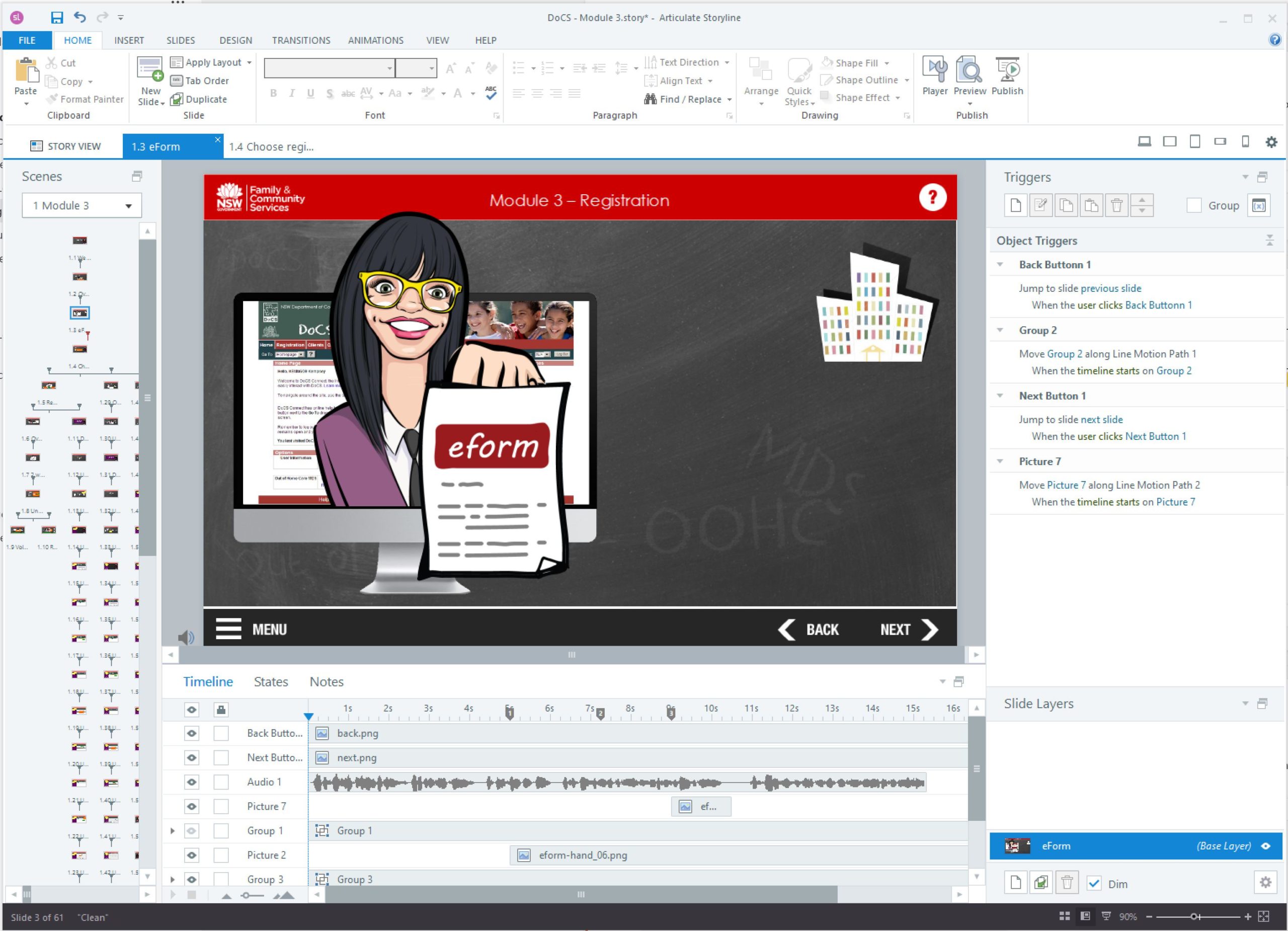
It’s actually easier than you think to convert Adobe Captivate or flash to eLearning using Articulate. In fact typically a 20 minute course takes just a couple of days to convert to Articulate Storyline and if you use Articulate Rise then its even faster.
For Articulate users, wen Flash ended they only needed to republish the old content as HTML with the latest version of Articulate and your problems are solved.
All the hard work has already been done such as the instructional and graphic design, screen layout, audio narration so its just a matter of extracting all those items.
For experienced Articulate Storyline developers, like our team at B Online Learning, it really doesn’t take very long. Let’s look at the process your team can follow.
Published Output
Sometimes clients don’t have the source files. The only item they have access to is the published output or SCORM.
To access the content we use a third-party software program known as a flash decompiler. There are a number of these available online. Some free (with varying levels of success), and some have a cost, but generally they allow you to extract the images, audio, video, animations and text from the .swf flash file in the published output.
Want to change to Articulate Storyline? Download a trial to Adobe Captivate if you don’t have the software. Open the file and see how many slides make up the module and get an idea to how the developer has structured the content.
To do the conversion, you basically rebuild the structure in Storyline.


Before you can rebuild anything though, you need to get all your images, video, audio and content sorted. Don’t worry about shapes and fonts. Grab the colour scheme with your eyedropper tool in Storyline or ask the client for their style guide which gives you all the RGB colour codes and corporate fonts.
The key things you want to capture here are images, the audio files and any videos. To do so open the library interface within Captivate that shows all the images, audio, video that are being used in the project. Right click (individually or select all files you want to export) and select export to save a copy to your development folder for insertion into Storyline when you do the rebuild. Make sure you rename everything, so you know where it needs to go once you commence building in Storyline. I like to use the slide number somewhere in the file name for easy reference.
Capturing on screen text is as simple as highlighting the text, copying and pasting it to another document or directly into your Storyline project.
So, there you go! If you are looking at updating your old content to Articulate then please contact us for help.
